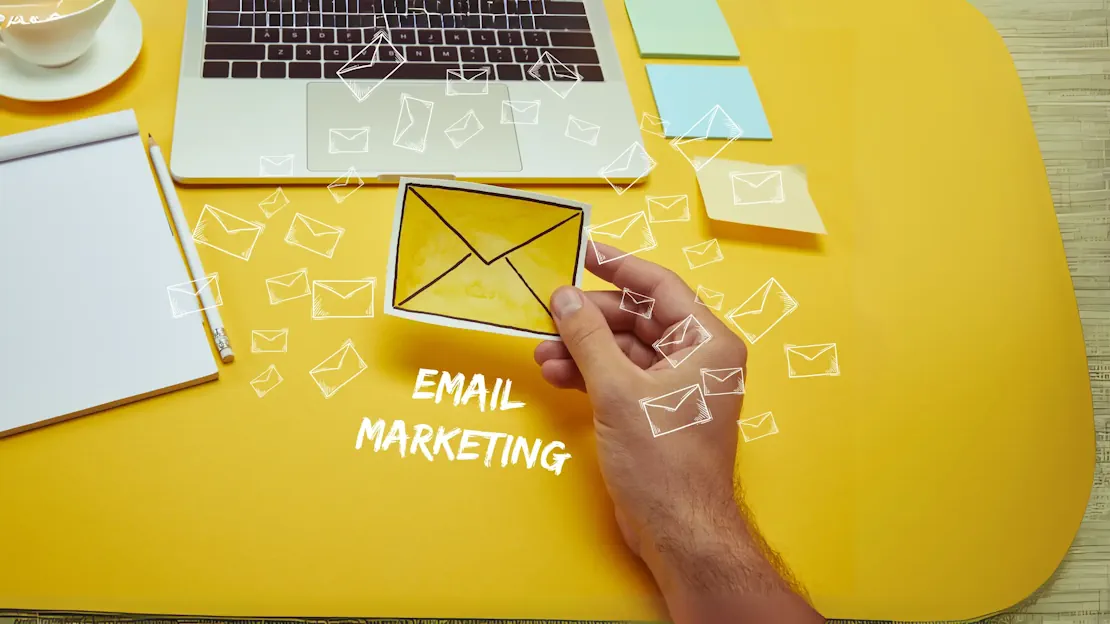Mastering Guest Blogging: A Step-by-Step Guide for 2024
 Photo by Plann from Pexels
Photo by Plann from PexelsEmail marketing continues to be one of the most cost-effective ways to engage with audiences and achieve business goals. With a reported return on investment (ROI) of $38 for every dollar spent, it's no surprise that businesses of all sizes rely on it to build customer relationships, nurture leads, and increase sales. But creating a winning email marketing strategy requires careful planning, smart segmentation, and optimized content. Here, we'll explore effective email marketing strategies with examples to guide your efforts.
What Is Email Marketing?
At its core, email marketing involves sending targeted messages to a list of subscribers via email. These campaigns can serve many purposes, from welcoming new subscribers and promoting products to nurturing leads or re-engaging dormant customers. The ultimate goal is to foster a meaningful connection between your business and its audience while driving measurable results.
Key Components of a Successful Email Campaign
To run effective email campaigns, you need more than just a catchy subject line or attractive visuals. Here are five essential components to focus on:
1. Define Clear Goals
Start with a SMART goal—specific, measurable, attainable, relevant, and timely. For example, your goal could be: "Increase newsletter subscription rates by 15% over the next three months by optimizing sign-up forms and offering an exclusive discount."
2. Segment Your Audience
Segmentation is a game-changer. By categorizing your email list based on factors like demographics, interests, or behavior, you can deliver personalized content that resonates with each group. HubSpot reports that segmented and targeted email campaigns generate 77% of email marketing ROI. Popular segmentation strategies include:
- Lifecycle Segments: Categorize contacts into subscribers, leads, and customers based on their stage in the buyer’s journey.
- Behavior-Based Segments: Use triggers like cart abandonment, website activity, or purchase history to target users with relevant messages.
- Demographic Segments: Tailor emails based on age, location, or other attributes.
3. Craft High-Quality Content
The heart of email marketing is the content itself. Engaging, value-driven content keeps subscribers interested and drives action. Focus on these elements:
- Subject Lines: Your subject line should grab attention and hint at the email's value. Personalized subject lines, such as using a recipient's name, can increase open rates significantly.
- Body Copy: Ensure your message is concise and aligned with the recipient's interests or needs. Avoid overwhelming them with too much information—clarity is key.
- Call-to-Action (CTA): Make your CTA clear and compelling. Instead of "Click Here," try action-oriented phrases like "Claim Your Offer" or "Start Your Free Trial."
Types of Email Campaigns
Here are some common types of email campaigns, along with examples to inspire your strategy:
Welcome Emails
A welcome email sets the tone for your relationship with new subscribers. Take inspiration from brands like Airbnb, which welcomes users with a clean design, a friendly tone, and clear next steps to explore their platform.
Promotional Emails
Promotional emails work best when you combine attractive offers with strong visuals. For instance, Casper, a mattress brand, sends re-engagement emails with witty copy and time-sensitive deals to encourage cart completion.
Educational or Newsletter Emails
These campaigns provide valuable insights or updates to keep subscribers engaged. Content may include blog articles, industry tips, or company news. A well-designed newsletter keeps your brand top-of-mind without being overly salesy.
Re-Engagement Emails
Sometimes, customers lose interest or forget about your offerings. Re-engagement campaigns, like those from Typeform, use playful language and special offers to bring users back into the fold.
Best Practices for Email Optimization
1. Personalization
Personalized emails generate higher open and click-through rates. Tailor content based on user preferences, previous purchases, or browsing history. For example, Amazon excels at sending personalized product recommendations based on user behavior.
2. Mobile Optimization
With most people checking emails on their phones, ensuring your campaigns are mobile-friendly is crucial. Use responsive email templates, concise copy, and large CTAs that are easy to tap.
3. Test and Iterate
A/B testing helps identify what resonates with your audience. Experiment with different subject lines, CTAs, or visuals to see what drives the best results. For instance, you could test whether a humorous tone outperforms a professional one for your audience.
Common Challenges and How to Overcome Them
1. Low Open Rates
Solution: Use attention-grabbing subject lines and send emails at optimal times based on your audience's time zones.
2. High Unsubscribe Rates
Solution: Ensure your emails provide value and aren't overly frequent. Let subscribers choose their email frequency via a preference center.
3. Deliverability Issues
Solution: Clean your email list regularly by removing invalid or inactive addresses, and avoid spammy words or excessive punctuation in subject lines.
Conclusion: Building a Winning Email Marketing Strategy
Email marketing remains one of the most impactful digital marketing channels. By defining clear goals, segmenting your audience, crafting engaging content, and optimizing for performance, you can maximize the impact of your campaigns. Whether you're nurturing leads, promoting a product, or simply sharing helpful tips, a thoughtful email marketing strategy ensures you're connecting with your audience in meaningful ways.
Ready to boost your email marketing game? Start by planning your next campaign, incorporating these strategies, and tracking results to refine your approach. The opportunities are endless, and the rewards are worth it.
